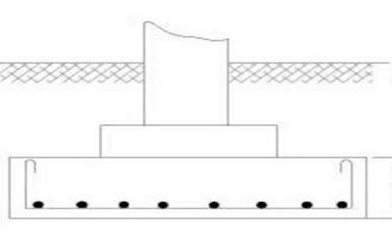1. The bearing capacity of sandy soil and gravelly soils is affected to the extent of ___________% by the presence of water table.
a) 50
b) 10
c) 25
d) 80
Discussion
Explanation: If the water table is above the foundation level, the water should be pumped out before placing the steel plate. If water is made with at a depth of one metre below the level of the foundation level, the load test should be carried out at that level.
2. Due to the adjustment of soil particles under the action of loading, there is some settlement at zero loading, this is known as the ___________
a) Bearing capacity
b) Safe bearing capacity
c) Vibroflotation
d) Zero correction
Discussion
Explanation: Zero correction is obtained from the load settlement curve. The zero correction should be deducted from the observed settlements to get the actual settlements.
3. The loading to the test plate is applied with the help of ______
a) Sand bags
b) Hydraulic jack
c) Wooden pegs
d) Hard rocks
Discussion
Explanation: In the plate load test, the hydraulic Jack is preferably provided with the remote control pumping unit. The reaction of the hydraulic jack is borne either by the gravity loading platform method or by the reaction truss method.
4. In analytical methods, which soil parameters used to determine the ultimate bearing capacity of the soil?
a) Angle of internal friction
b) Permeability
c) Adhesion
d) Porosity
Discussion
Explanation: Angle of internal friction and Cohesion are the soil parameters which are used in analytical method to determine the ultimate bearing capacity of soil. The samples, preferably of undisturbed soil, are collected from the bore holes or test pits and various test are then carried out in the soil testing laboratory for the purpose of analytical analysis of the soil.
5. In Penetration test, the formula obtained for the safe bearing capacity of soil per unit area is given by?
a) R÷{A×F}
b) R-{A×F}
c) R+{A×F}
d) R×{A×F}
Discussion
Explanation: Safe bearing capacity of soil per unit area = R÷{A×F} where R is equals to ultimate resistance of soil, A = 2 cross sectional area of the substance, F equals two factor of safety. The results obtained by this method are approximate and hence this method is used for minor engineering structures.
6. Which method for determining the bearing power of soil is most preferred among the given below?
a) Method of loading
b) Plate load test
c) Penetration test
d) Analytical method
Discussion
Explanation: Plate load test is the improved refined method and it is widely used for determining the bearing capacity of soil for important civil engineering structures. This method can be carried out in two ways: gravity loading platform method and reaction Truss method.
7. A spread is given under the base of a wall or common is known as ________
a) Piles
b) Pier
c) Footing
d) Plinth
Discussion
Explanation: Such spread is known as footing and the foundation is known as spread footing. Footing which contains steps or off sets and it is also referred to as the step footing. If the wall rests directly on foundation concrete without any step, it is known as the simple footing.
8. What is the value of angle of response for clay(dry) soil.
a) 10°
b) 45°
c) 30°
d) 60°
Discussion
Explanation: The depth of footing should also be such that the rate of angle of spread of the load from the wall base to the outer edge of ground bearing does not exceed the permissible value.
9. Identify the given type of foundation below.

a) Stepped foundation
b) Single foundation
c) Sloped foundation
d) Shallow foundation
Discussion
Explanation: If the wall raised directly on foundation concrete without any step, it is known as the simple footing or single footing. In this case, the load of the wall is directly subjected to the footing without any step distribution and hence mostly affected by central buckling.
10. Which Foundation is used when the wall carries light loads or when the safe bearing pressure is very high?
a) Simple Strip footing
b) Simple pad footing
c) Grillage footing
d) Strap footing
Discussion
Explanation: In that case, a simple strip footing is provided. The wall directly rest on the concrete base, and no masonry offset are provided since spread is not required.